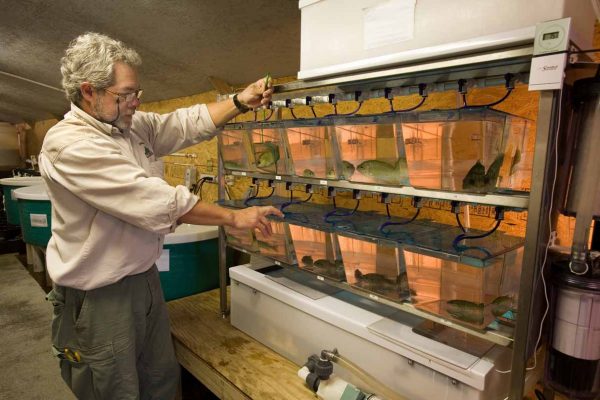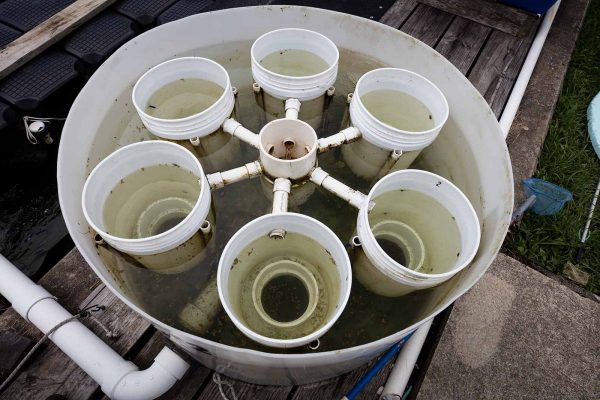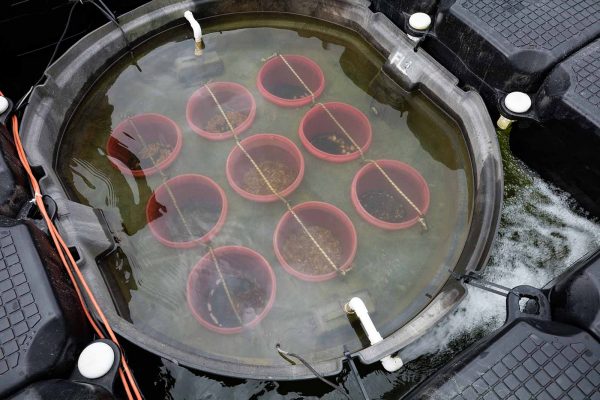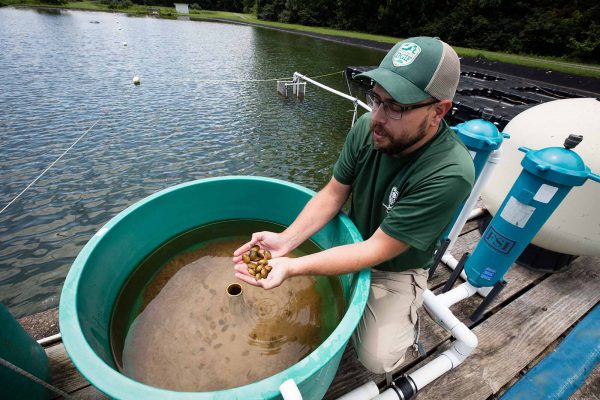Located near Marion, Virginia, the Aquatic Wildlife Conservation Center (AWCC) was established in 1998 by the Virginia Department of Wildlife Resources (DWR) to actively recover Virginia’s freshwater mussels. The AWCC has also worked with other aquatic wildlife, including the state-threatened Spiny Riversnail (Io fluvialis) and the Eastern Hellbender (Cryptobranchus alleganiensis alleganiensis).
Freshwater Mussel Cultivation
Given their high level of imperilment, a number of states and conservation organizations are trying to recover freshwater mussels by actively propagating them. The process begins with checking glochidia (mussel larvae) viability. A few glochidia are removed from the female mussel and salt grains, used to simulate the chloride found in fish blood, are placed alongside each other in a small water dish. Mature or viable glochidia rapidly close, while immature glochidia will react slowly or not at all. If the glochidia are viable, they are removed from the female and placed into an aerated container containing the known host fish. Under natural conditions, the number of glochidia that infest is so low that it rarely causes damage to its host; however, care must be taken not to over infest, which can cause the fish undue stress or death in the laboratory. Fish are infested over a short period and checked to determine the degree of infestation. After the procedure is complete, the fish are transferred to tanks, which are carefully inspected over the next two weeks for juvenile mussels. While these techniques are known for a few species, many more require additional research before laboratory cultivation is possible.
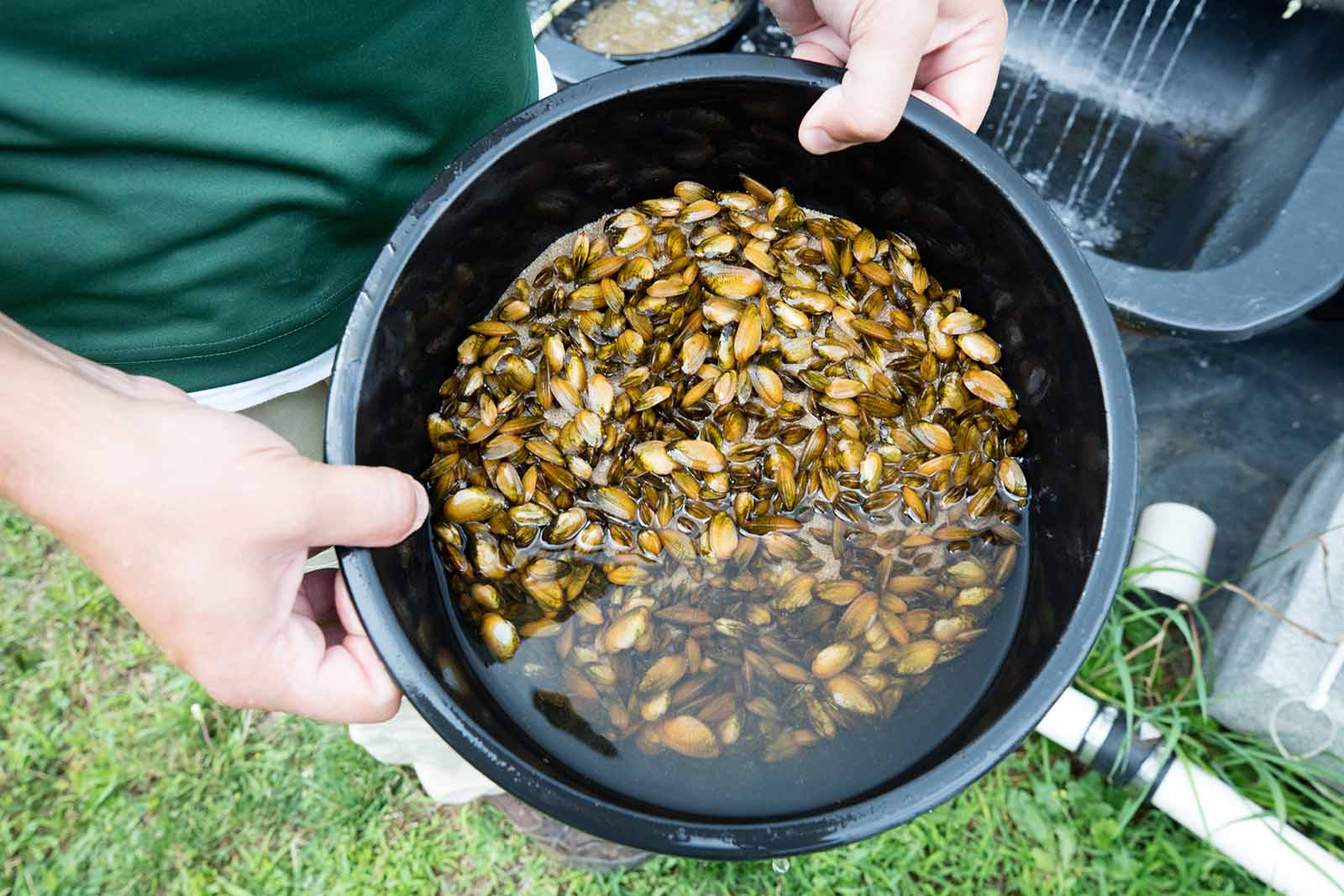
Mussel Production Systems at AWCC
Recirculating systems are used at AWCC to propagate freshwater mussels. These systems feature tanks with individual inflow and outflow. Host fish infected with larval mussels are kept in tanks. Out-flowing water is filtered to collect juveniles after they fall off the host fish and then is filtered and pumped back through the system. Different kinds of systems have been designed and developed by AWCC staff to hold fish of differing sizes and mimic their habitat needs. These systems are designed to permit propagation of more than one species per system at a time allowing the production of over 20 unique species each year.
Juvenile Rearing
As juvenile mussels drop off the host fish, they are counted and placed in rearing systems to allow them to grow large enough to increase their chances of survival in the wild. The rearing systems include tanks with substrate that are supplied with filtered water from the AWCC’s ponds. The water is filtered to eliminate predators that might consume small juveniles. Their diet of naturally growing algae and bacteria is supplemented with commercial marine algae. The AWCC is constantly developing and testing new systems and methods of rearing juvenile mussels in an effort to reach optimum growth and survival rates.


